Market To Market: A Guiding Light For Government Businesses
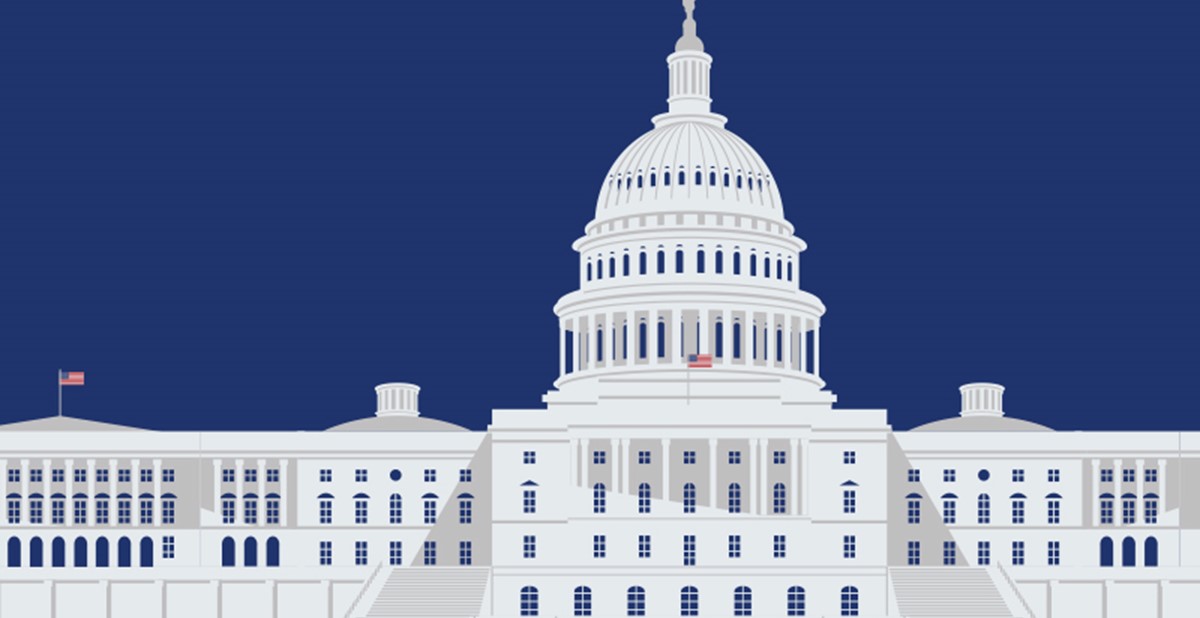
"...The only thing we have to fear is fear itself.” President Roosevelt addressed the nation with these words during the Great Depression, which saw industrial production drop 47 percent, GDP decline by 30 percent and unemployment soar to more than 20 percent. While one of the bleakest periods in American history, the 1930s also gave rise to the New Deal, which created policies such as Social Security and a minimum wage. Nearly all policies that were passed during that era are still in existence today.
From economic crises to natural disasters, governments throughout history have found ways to help their people. During the COVID-19 pandemic, the United States, the world’s largest economy, took a broad range of steps to help Americans, including approving trillions of dollars in monetary stimulus that included direct payment to individuals, enhanced unemployment benefits, $350 billion in small-business loans, and $500 billion in loans and grants to municipalities, states and corporations.
Governments at all levels—federal, state and city—are using every tool in their toolboxes, from social media to online forums, to provide critical information about COVID-19 health and safety as well as about financial programs available to help citizens manage through the crisis.
For decades, government clients at the federal, state and local levels have used promotional products to educate, inform, recruit, highlight safety awareness, promote safety and encourage health screenings and healthy lifestyles, as well as to celebrate achievements, inspire action, sign legislation, reinforce critical messages to the public and recognize government employee milestones.
According to an NBC News and The Wall Street Journal poll, 60 percent of Americans say they approve of the federal government taking a bigger role in the economy during the coronavirus economic collapse.
Before COVID-19, Americans also looked to the government to do more to solve the country’s problems. According to Gallup’s 2019 Governance poll, nearly half (47 percent) of Americans want government to take active steps to improve people’s lives, up 11 percent from 2010. A quarter of Americans say they would prefer to have more government services and higher taxes than the alternative of fewer government services and less taxes.
People want help, and in a world reeling from a pandemic that brought new challenges daily, they need it more than ever. In this unique era, promotional consultants can help government leaders educate and encourage citizens, bolster businesses and build trust. They can help governments protect citizens and guide them back to health and prosperity. These are unprecedented times, but as President Reagan said, “The future doesn’t belong to the fainthearted; it belongs to the brave.”
–––––––––––––––––––––––––––––––––––––––––––––––––––––––––––

In March, as the U.S. began grappling with coronavirus and adjusting to stay-at-home mandates, most Americans (54 percent) said the government was not prepared to contain the outbreak or provide care for the most severe cases, according to Business Insider. Looking ahead, governments must be more intuitive and quicker to adapt to needs and challenges as they arise. Promotional products distributors can help governments at all levels reach citizens faster with critical information and useful tools.
As the largest employer in the nation, with about 9.1 million workers on the payroll, according to The Washington Post, the federal government also has a responsibility to its workforce. Even before COVID-19, many public sector workers struggled to save for emergencies or even make ends meet. The vast majority (88 percent) of government workers are worried about their personal finances, with 66 percent admitting they worry while on the job, according to the Center for State and Local Government Excellence. Promotional products distributors can help ease this anxiety through financial wellness programs. If offered, 68 percent of government workers say they would participate.
–––––––––––––––––––––––––––––––––––––––––––––––––––––––––––

According to USA Today, the number of Americans working for federal, state or local governments fell from 22.5 million to 22.4 million over the past decade. These states had the largest government employee workforces in 2018.
- Alaska: 24.6%
- Wyoming: 24.1%
- New Mexico: 22.2%
- West Virginia: 21%
- Mississippi: 20.9%
- Oklahoma: 20.6%
- Hawaii: 19.1%
- North Dakota: 19%
- Montana: 18.9%
- Alabama: 18.9%
Source: USA Today
–––––––––––––––––––––––––––––––––––––––––––––––––––––––––––

In 2021, the government expects to spend $4.8 trillion, with almost 60% going toward mandated benefits such as Social Security, Medicare and Medicaid.
Interest on the U.S. debt is estimated to be $378 billion. Interest on the approximate $23 trillion debt is the fastest-growing federal expense, expected to double by 2028.
Sources: The White House, “A Budget for America’s Future FY 2021” and Committee for a Responsible Federal Budget
–––––––––––––––––––––––––––––––––––––––––––––––––––––––––––
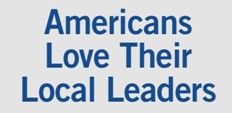
- 72% of Americans say they have a “great deal” or “fair amount” of trust in their local government, compared to 63% who say the same about their state government
- Two-thirds of Americans think local elected officials care about the people they represent “all or most” (14%) or “some of the time” (53%)
- 64% of Americans say local elected officials provide fair and accurate information to the public at least some of the time while only 46% say members of Congress do
- Both Republicans (74%) and Democrats (78%) share relatively high levels of confidence in local governments
Sources: Pew Research Center and Gallup
–––––––––––––––––––––––––––––––––––––––––––––––––––––––––––

Every five years, the Census Bureau conducts the Census of Governments, categorizing each government in the country. In 2017 (the most recent categorization), the U.S. contained 38,779 general-purpose governments plus another 51,296 special districts. States with the most counties, cities, towns and other general local governments include:
- Illinois: 2,828
- Minnesota: 2,720
- Pennsylvania: 2,625
- Ohio: 2,327
- Kansas: 1,993
- Wisconsin: 1,924
- Michigan: 1,856
- North Dakota: 1,718
- Indiana: 1,662
- New York: 1,587
Source: Governing.com
–––––––––––––––––––––––––––––––––––––––––––––––––––––––––––

Here’s how much each agency within the U.S. federal government is projected to spend for fiscal year 2021:
- Department of Health and Human Services
$1.37 trillion - Social Security Administration (off budget)
$1.11 trillion - Department of Defense
$729 billion - Department of the Treasury
$691 billion - Department of Veterans Affairs
$235 billion - Department of Agriculture
$129 billion - General Services Administration
$107 billion - Social Security Administration (on budget)
$102 billion - Department of Transportation
$89 billion - Department of Education
$79 billion - Other Defense Civil Programs
$65 billion - Department of Homeland Security
$60 billion - Department of Housing and Urban Development
$52 billion - Department of Justice
$41 billion - Department of Labor
$38 billion - Department of Energy
$35 billion - International Assistance Programs
$35 billion - Department of State
$26 billion - Other Independent Agencies (on budget)
$26 billion - National Aeronautics and Space Administration
$24 billion - Department of the Interior
$16 billion - Department of Commerce
$12 billion - Judicial Branch
$9 billion - National Science Foundation
$8 billion - Environmental Protection Agency
$8 billion - Legislative Branch
$6 billion - Corps of Engineers-Civil Works
$6 billion - Small Business Administration
$871 million - Other Independent Agencies (off budget)
$790 million - Executive Office of the President
$430 million
Source: Statista
–––––––––––––––––––––––––––––––––––––––––––––––––––––––––––

According to a March 2020 Gallup poll, Americans are more concerned about the government than the coronavirus. Here’s what Americans say they are most worried about now:
- 27% - The government/poor leadership
- 13% - Diseases/coronavirus
- 11% - Health care
- 8% - Immigration
- 6% - Unifying the country
- 5% - Environment/pollution/climate change
Source: Gallup
–––––––––––––––––––––––––––––––––––––––––––––––––––––––––––
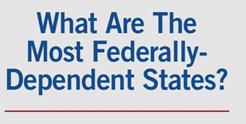
WalletHub examined state residents’ dependency and state governments’ dependency on the federal government. These states depend the most on the federal government.
- New Mexico
- Mississippi
- West Virginia
- Montana
- Kentucky
- Alaska
- Arizona
- Indiana
- Alabama
- South Carolina
Source: WalletHub
–––––––––––––––––––––––––––––––––––––––––––––––––––––––––––

These campaigns won PPAI Pyramid Awards for creativity, execution and results. Find more case studies in dozens of categories at ideasource.ppai.org. It’s free for PPAI members.
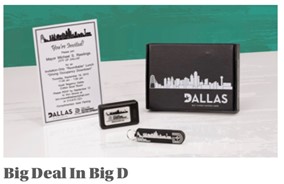
The City of Dallas’s Office of Economic Development wanted to entice investors to develop the Dallas Central Business District. A clean black-and-white logo was developed for use on invitations, name tags and flash drives, which were pre-loaded with information and presentations. The campaign resulted in a $1 million commitment to remodel downtown’s Thanksgiving Square and to build a 495-space parking garage. As a result, the expansion attracted two companies to relocate to the area, bringing in 2,850 new jobs.

To promote keeping expenditures in the state, a selection of products were chosen to support a Made In Georgia theme for delegate gifts at the State of Georgia’s annual meeting. Because the Peach State is primarily agricultural with strong service industry ties, products selected included an apron, coaster, Solo cup and regional cookbook—all locally provided. Even the packaging was locally sourced. The gift was appreciated by the recipients and the $15-$20 spent for each gift went back to the local economy.
–––––––––––––––––––––––––––––––––––––––––––––––––––––––––––

The Atchison Lola Cotton Tote features a fashionable scalloped edge, a large main compartment with color-blocking along the bottom, shoulder-length handles and an eight-by-six-inch imprint area. Appropriately available in red and blue, as well as in black.
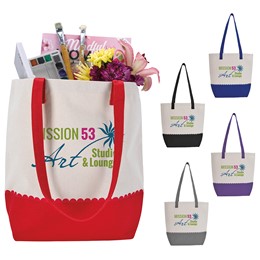
BIC Graphic NA / PPAI 114187, S13 / www.bicgraphic.com
–––––––––––––––––––––––––––––––––––––––––––––––––––––––––––
Government agencies can highlight a message or logo on the holographic rainbow journal, which includes 100 sheets of ruled paper and a black paperboard back cover. Choose from wire bound or perfect bound.

JournalBooks/Timeplanner Calendars / PPAI 110769, S10 / www.journalbooks.com
–––––––––––––––––––––––––––––––––––––––––––––––––––––––––––
The bamboo sticky notepad allows local governments to promote health initiatives in an eco-friendly way. Customize the renewable bamboo cover with a full-color imprint.
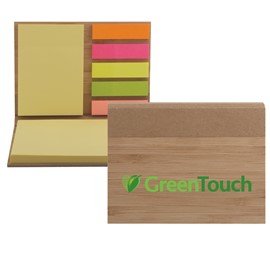
Goldstar / PPAI 114031, S7 / www.goldstarpens.com
–––––––––––––––––––––––––––––––––––––––––––––––––––––––––––
Mayors’ offices can connect with citizens while promoting health and wellness with foaming hand sanitizer. This FDA-approved, USA-made sanitizer kills 99.9 percent of germs for safe handling of doorknobs, shopping cart handles and other frequently touched objects.
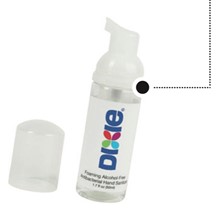
Fields Manufacturing / PPAI 111951, S9 / www.fieldsmfg.com
–––––––––––––––––––––––––––––––––––––––––––––––––––––––––––
Governments can use the Newport VII water bottle to promote wellness initiatives while encouraging community members to move away from single-use water bottles. This BPA-free, FDA-compliant water bottle features a flip-cover spout and integrated carry handle on the screw-top lid.
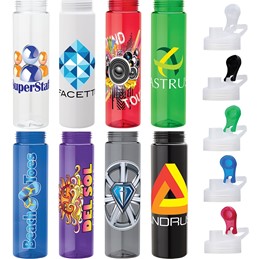
Logomark, Inc. / PPAI 110898, S12 / www.logomark.com
–––––––––––––––––––––––––––––––––––––––––––––––––––––––––––
Audrey Sellers is a Dallas-Fort Worth area-based writer and former associate editor of PPB.

